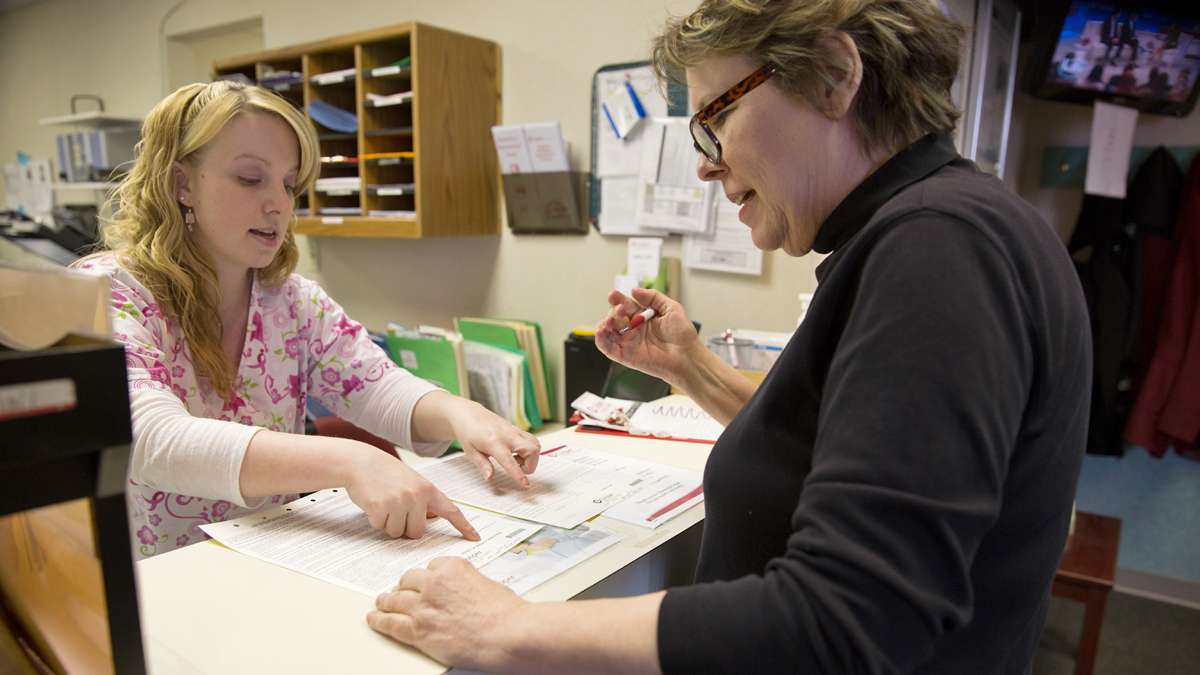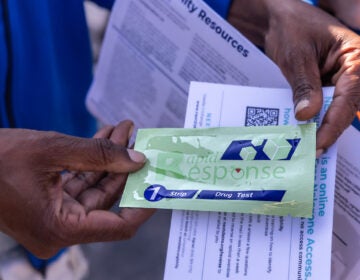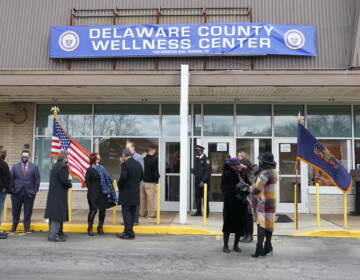The numbers are in: Here’s how ACA open enrollment went in Pa., N.J., and Del.
The number of people who signed up for insurance through the Affordable Care Act dipped slightly in all three states, despite Trump administration efforts to curtail the law.

Receptionist Jennifer Baker advises Suzanne Cloud on health insurance forms before her appointment at Cooper Medical Services. (Lindsay Lazarski/WHYY)
Only slightly fewer Pennsylvanians signed up for health insurance plans under the Affordable Care Act (ACA) this year, despite a shorter enrollment period and other moves by the Trump administration that many feared would significantly reduce the number of enrollees.
About 397,000 Pennsylvanians signed up for an ACA plan during this year’s enrollment period, which ended Dec. 15 — about a 7 percent decrease from last year. Overall, signups for health insurance in the 38 states using the federal Healthcare.gov exchange were down 4 percent.
But with all the uncertainty surrounding the law, some say this year’s enrollment numbers actually show that the plans are as popular as ever.
“There is an overwhelming demand for the Affordable Care Act and for folks to be able to enroll in quality, affordable coverage, despite all of the efforts to kind of undermine the law,” said Antoinette Kraus, executive director of the Pennsylvania Health Access Network.
Although the Trump administration cut the enrollment period in half and scaled back federal funds available to help promote enrollment, Kraus said her organization helped twice as many people sign up for a plan in the ACA marketplace this year.
The only insurance company offering marketplace plans in southeastern Pennsylvania, Independence Blue Cross, said it saw a 10 percent increase of new enrollees compared to last year.
In October, the administration also stopped making subsidy payments to insurers that help reduce low-income consumers’ out-of-pocket expenses. That drove up premiums, and sowed doubts about whether the ACA plans would be affordable this year, said Dan Polsky, executive director of the Leonard Davis Institute of Health Economics at the University of Pennsylvania.
The end of the so-called cost-sharing subsidies forced states to regulate the insurance market in ways that would keep insurance plans affordable, Polsky said.
“Pennsylvania worked with their insurers to create a premium structure that was the best situation for the consumers in the state,” he said.
Tax subsidies kept prices low for people who needed help paying for health coverage, Polsky added. A third of new members signing up in southeastern Pennsylvania this year qualified for plans with a $0 premium, according to Independence Blue Cross.
Enrollment numbers in New Jersey and Delaware dropped about 5.5 percent and 9.9 percent, respectively. But demand for the insurance coverage offered in the ACA marketplaces appeared stable, given unfavorable policy changes, Polsky said.
“For there to be nearly as many people enrolled with half as much time I think is quite remarkable,” he said.
—
Clarification: This story has been updated to clarify that Independence Blue Cross saw a 10 percent increase of new enrollees, not overall enrollment.
WHYY is your source for fact-based, in-depth journalism and information. As a nonprofit organization, we rely on financial support from readers like you. Please give today.





